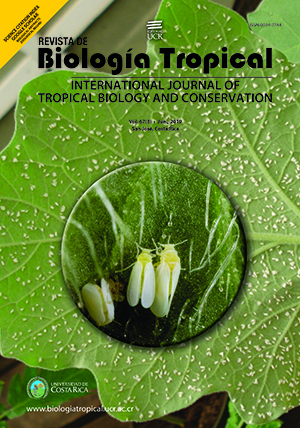Abstract
Several wild species of the family Felidae are at risk, and population size is one of the most important ecological parameters to determine conservation actions. Population size is influenced by different biotic and abiotic factors that satisfy the requirements of the species to survive and reproduce, allowing the permanence of the species through time. Because population size is not homogeneous throughout the distribution, there are several hypotheses to explain their variations. One proposal considers that more abundant populations are located in regions with environmentally suitability, and population size decreases towards the less favorable ones. Another hypothesis considers that the population size is related to the internal structure of the ecological niche, where the largest populations are located in the centroid of the niche, and the size declines as the distance to this centroid increase. The objective of this study was to evaluate the relationship between population abundance, environmental suitability and ecological niche in four wild felids species of America. The density of Lynx rufus (bobcat) was correlated positively with the environmental suitability index, the highest density of Panthera onca (jaguar) was located in regions near the centroid of the niche, while the population densities of Leopardus pardalis (ocelot) and Puma concolor (cougar) did not conform to the predictions of either of the two hypotheses. The relationship between feline density and environmental characteristics was species-specific, with no general pattern.
##plugins.facebook.comentarios##

This work is licensed under a Creative Commons Attribution 4.0 International License.
Copyright (c) 2019 Gabriela Pérez-Irineo, Claudia Ballesteros-Barrera, Antonio Santos-Moreno


